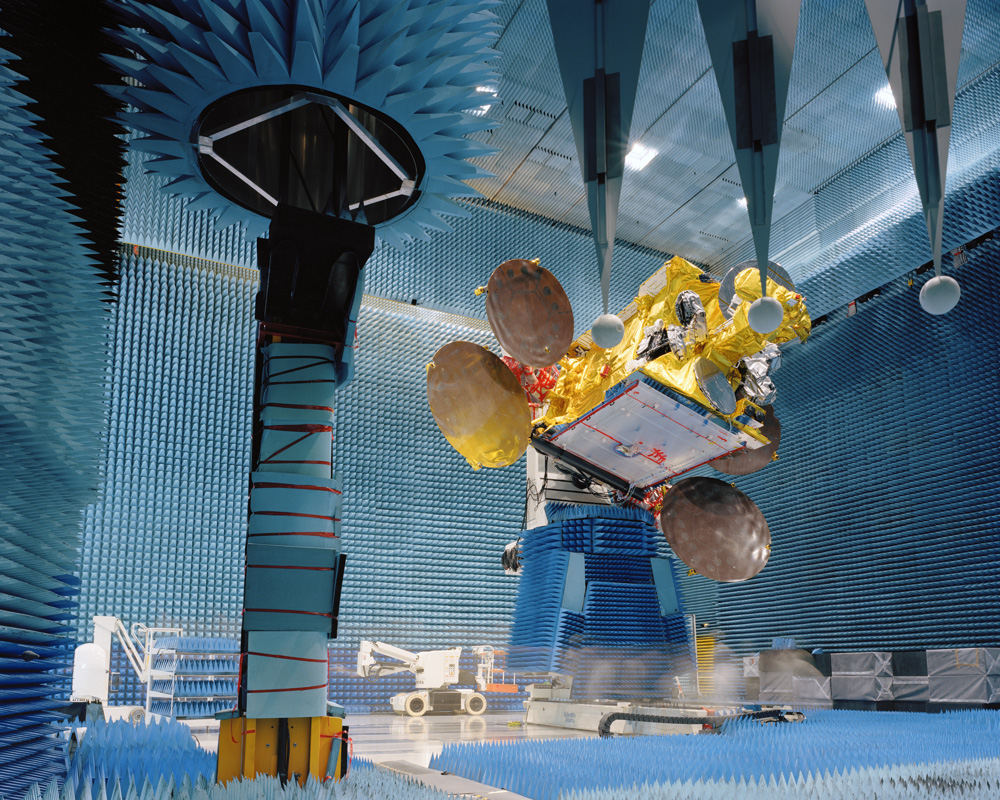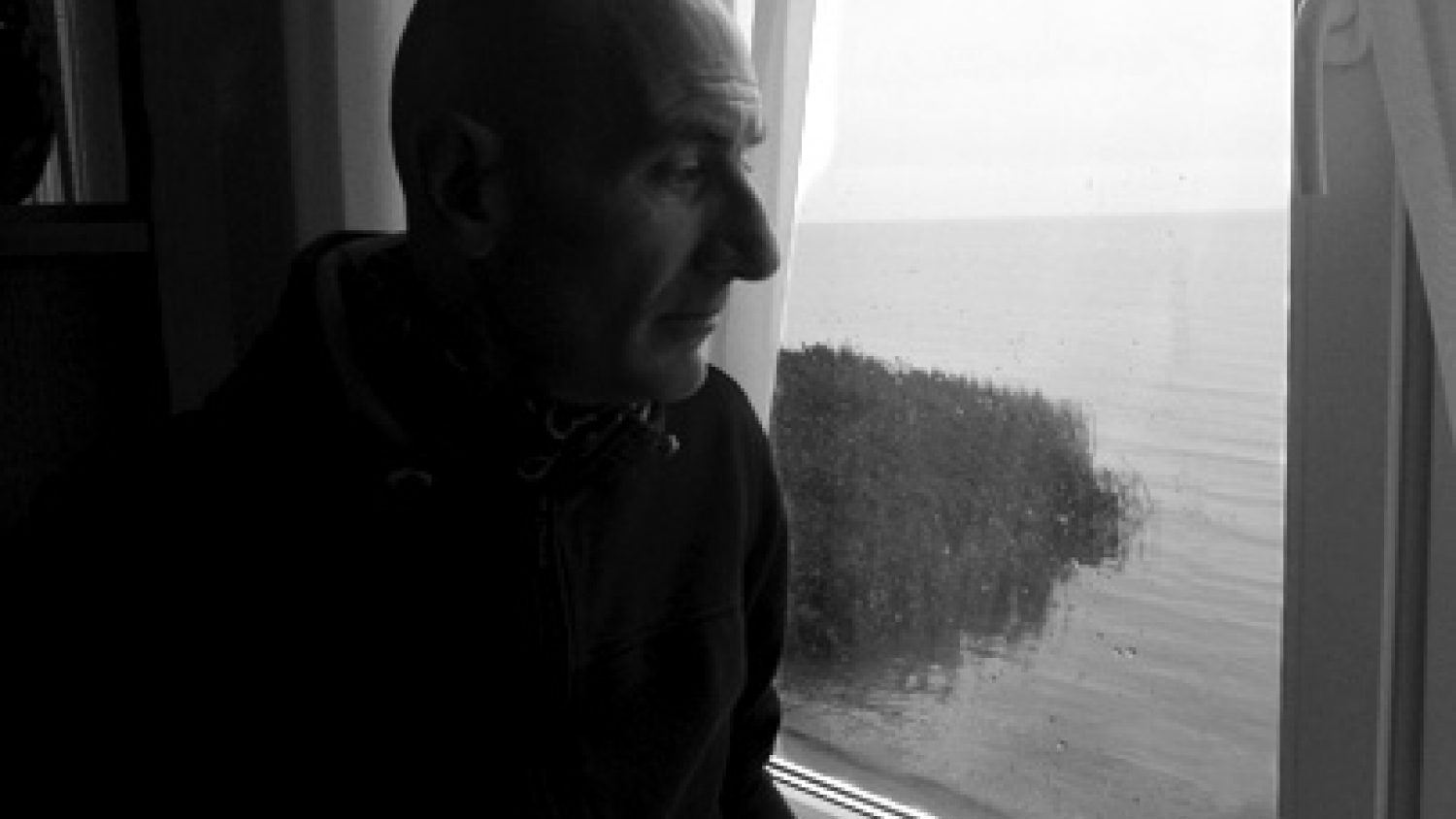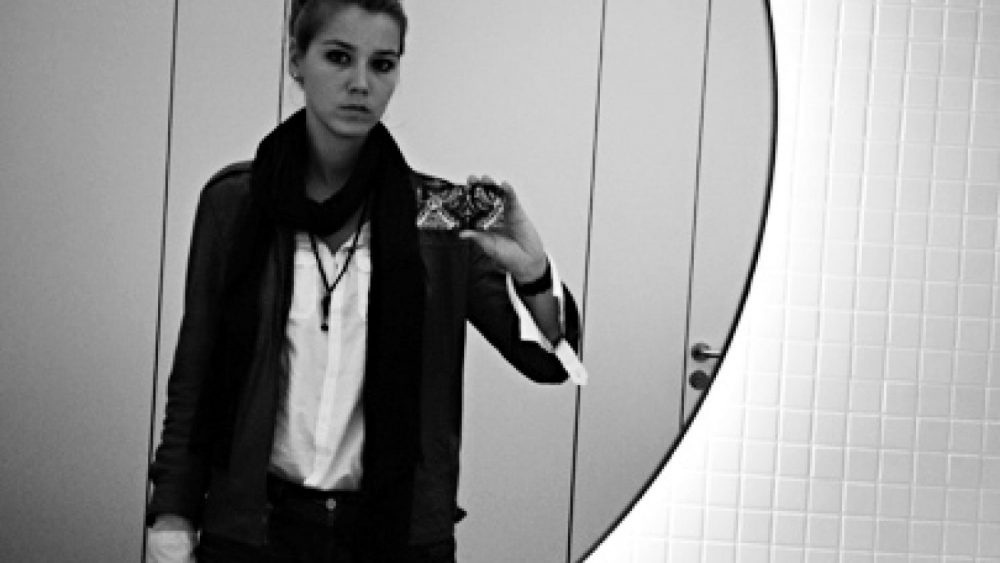Breakfast with Simon Norfolk
I met British photographer Simon Norfolk (1963) in Nida, where in mid-September the seminar organised by the Association of Lithuanian Photographers took place for the 35th time. My task was to present a paper on the subject What is Going on in Contemporary Latvian Photography, while Norfolk revealed a tiny part of the project Burke + Norfolk: Photographs From The War In Afghanistan at the Nida Museum of History, where the photographs from Afghanistan taken in the 19th century by Irish photographer John Burke have been combined with the works by Norfolk. Last year this exhibition was organised at the Tate Modern in London. Furthermore, Norfolk gave a lecture on the history of Afghanistan, Burke and his own experience in this country of Central Asia. To me, it was definitely one of the most exciting presentations given by a photographer! I meet Norfolk for a chat next morning over the breakfast.
How did it turn out that you’ve come here?
I think I met Jonas [Staselis, the Chairman of Association of Lithuanian Photographers] at the beginning of the year at the World Press Photo. I gave a speech there and I think it must have been the speech that got me here. All the winners were asked to give a speech. It was strange because… I have won a World Press Photo before and I gave a talk as it was your chance to impress these picture editors, gallery owners but now this technology has changed. What happens now is that these photographers are shown on the stage and all they do is to sort of whisper at the microphone – “we made a film”. And they pushed a button and the film started. The films were all horrible. And I think Jonas thought – “oh, he is a kind of a person who can make a speech so we should invite him”.
I was quite intrigued when he said they have got two events, which one do I want to come to. There was one for photojournalists [Vilnius Circle] and the other for art photographers [seminar in Nida]. I would be happy to go to either half. I was showing my work at the Tate Modern gallery, which is just about as snobby as a gallery gets in England, and the work has also won one of the World Press Photo awards, which is just about hardcore, blood, guts and death [organization]. It’s interesting that the same pictures can appeal to two separate divisions of photography – art and photojournalism. Maybe those borders that you cannot do art if you do photojournalism dissolve. When Jonas said I need to choose, I said I could do both. Why not. That resolving of boundary is interesting.
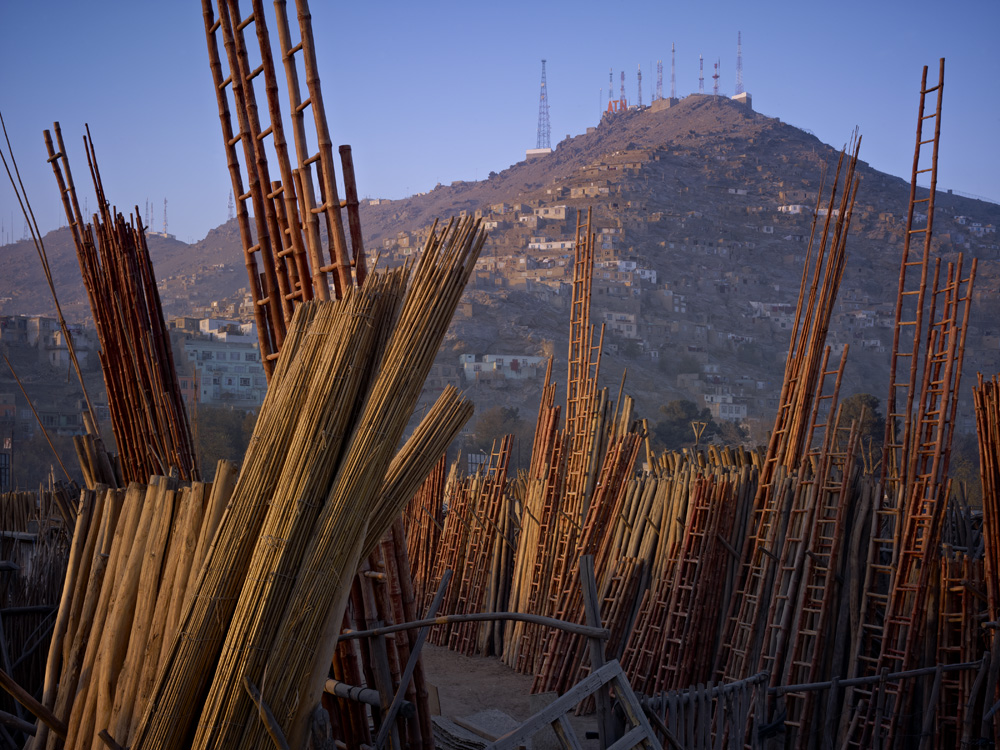
The boundaries are very strong here. Photographers live in relatively closed communities that hardly interact with each other. Apart from amateurs, young artists don’t want to be involved with the Association of Photographers. There’s a Nida Art Colony residence with 50 students from art academy, but they are not interested in this event, even though there are nice things to see. They just assume it’s not their world.
I am surprised they are not showing their portfolios. I spoke to two guys yesterday and they said they haven’t even brought their portfolios with them. Which is pretty foolish in terms of opportunity they have. But let’s not talk about that, because I am not here to say what’s wrong with Lithuanian photography, because I don’t know.
It seems a little bit that the event is about technology and sort of a camera club, but I am quite happy to speak to camera clubs – I will speak to anybody. A lot of professional colleges seem to produce professional artists. I always found that idea rather bizarre, that you can be schooled and become an artist. There is something really sterile and dry about it. I don’t know what art is but I certainly know the way I make art or the way not to make art – sort of saying: “Right, let’s make some great art today, let’s go!” That’s not how you make it. I didn’t become a photographer to become an artist. I became a photographer to talk about things that interest me. If there is art as well – good, that’s nice, but it’s not a vital part for me. I became a photographer in order to tell stories, to make a noise about politics and I’ll go anywhere to find audience – I am happy to talk to camera clubs or people in the shopping centre. And I am also happy to show my work at an art gallery. The reason I chose Tate Modern, more sort of out of an anger – why shouldn’t be my pictures there? You know, what the f**k is that place for?! Just stupid sculptures and portraits?! Actually what even they call great art was produced with much more political input behind it. It is just that hundred years since those pictures were made a lot of politics have been washed out of them. Even painters like Goya. Goya was a fighter and propagandist but now his pictures appear in art galleries and they don’t tell anything, you just look and them and think what a beautiful use of light. For me I would go anywhere to reach audience.
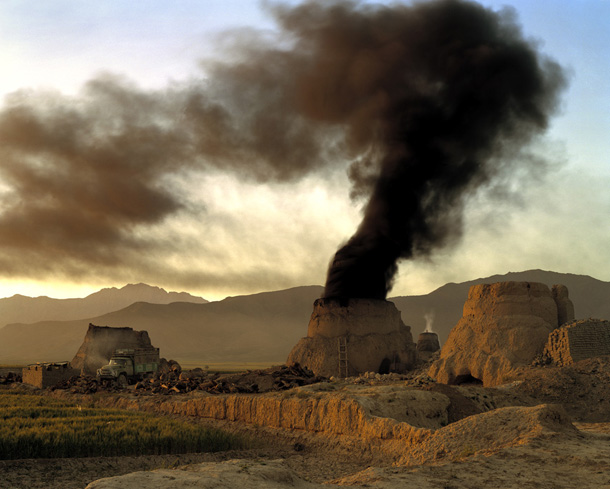
You were born in Nigeria. Have you also lived there?
No, I left when I was 3. A civil war started. My parents were from Manchester. It was hit pretty hard during the WWII. The economy was very bad. And they went to Nigeria like people now go to Dubai. You know, getting a job. Myself and my sister were born there. I don’t really have memories. Well, there was something around the house. In Nigeria we had great lifestyle – we got a car, cleaner, gardener, comparing to what was in England, my father was just a working class man. We lived this rather grand life. And then suddenly we were pretty poor when we came back. That’s one thing I remember that there was something grand behind it and that we lost it. And I think England as a country lives in this kind of memory that something rather grand and important is behind us but we don’t have it anymore.
Yesterday at your talk I could notice you have a special attitude towards Britishness and the empire.
What is the British Empire? It is not just interesting historically. I began taking photos seriously since 2001 when I went to Afghanistan. When I started, I didn’t know that for 10 years I will be taking pictures of American wars. In fact, before 9/11 Americans were rather far from using a word “empire”, they thought it’s something what British or French did, terrible things. Americans are different – we can send them CDs of Britney Spears but we won’t invade their countries. But then America changed gear and I started to photograph when that process began. What is the empire, how it is structured – it is important today. Maybe Americans are just over the hell, maybe there will be the end of the empire, maybe they will have different attitude when the power is in China or India or whoever gonna be next. It’s interesting, but it’s not that until the end that you realise the process is over. Only then you can see how it has been, appreciate what it was. What you can learn from British, can be applied to American empire, too. But they are determined not to learn any lessons from history whatsoever, everything must be reinvented, everything must be their project, mistakes must be repeated with all the massacres and murders. They live in their own world and create their own reality.
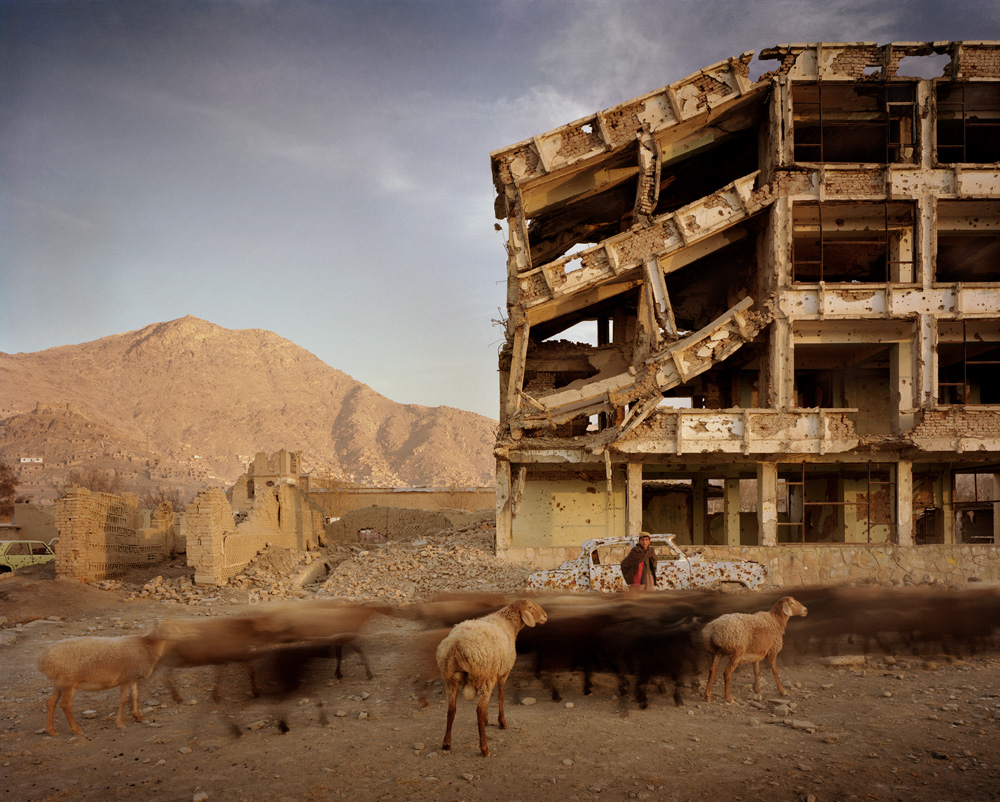
How did you decide to go to Afghanistan the first time?
I have always been interested. I was doing a lot of freelance work, mostly for magazines. I was going kind of nowhere, had a huge debt, something like 25 thousand pounds on my credit cards. I was just slowly disappearing.
The issue of war should be important for any country that have soldiers there, like Lithuania or Latvia, but it doesn’t seem to have been really discussed at all. You think about Vietnam War – when I was at college all the reference was about Vietnam War. All the photographers that were there were critical, they stuck their nose in other people’s business, and they got behind the story and they eventually created atmosphere that made it impossible for the United States to stay in Vietnam. Seems that this critique has disappeared. Where has it gone? Photographers don’t want to do that anymore. I wanted to change war photography, to photograph it in a different way. I had this idea of going with 4×5 field camera to the conflict and see if it works. I was making my living using Hasselblad. When I went to Afghanistan, I thought there is a good chance being robbed. So, if I take Hasselblad square format and lose it I can’t work. If a 4×5 camera gets stolen, I can use Hasselblad to make money to buy another 4×5 camera. It was cheap, 1200 euros camera and lens. I also thought it doesn’t look stealable, it looks like furniture, who’s gonna steel it? I had also 35 mm film but I left it behind before going to the airport. I thought what’s the point – there’s gonna be loads of photographers with better connections, more money, satellite antennas, etc. I just try with this and I go home. I wanted to photograph in Kosovo but didn’t have a nerve, I was too afraid and was angry about that. I said next time there is something I go. It was more as an experiment, just to see if I can do that. When I got there, on the second day I took one picture and everything became clear to me, how to do it and why. I was very interested in paintings at the time, kind of paintings that were being bought by English at the beginning of building the British Empire in the 17th century. When they went on a grand tour to Rome, they were buying paintings of ruins, which were all paintings about a metaphor that even the greatest empire, the Roman, is now nothing more than ruins. The idea was to quote those paintings and I photographed in the same golden light that we see in those paintings. I went with my own money and worked with a couple of female photographers and we just bungled through like amateurs and very kind Afghan people helped, kept us safe. It was a kind of an adventure like Indiana Jones.
Then I came back and processed films and I thought it looks good, never seen this before. It was just around Christmas of 2001 and a good friend of mine said I should contact Kathy Ryan from The New York Times magazine. I called and surprisingly she was on the phone herself. I said “hello, I have been to Afghanistan with a large format camera” and she said “hang on, we just have come out of the meeting where we thought of sending someone with a large format camera. I don’t know you, if we don’t use your pictures and you see a large format photos in our magazine then it’s not because we have stolen your idea”. So I sent my pictures and she called me later and said they loved them. The fact that they said they were good made me think that maybe yes – they are good. My agency said we should push them on some more publications. Later I thought I should publish a book but since I didn’t had enough images for the book I went back to Afghanistan in May, 2002 for a month. With this work I got prizes and my career completely changed. It was my first time since college I was not in debt. First 10 years of my career as a photographer were all in the red.
You were studying in Newport…
Yeah, I sort of challenged that, too. I went to the university to be an academic. I thought of doctoral thesis – if you go and see them in a library, sometimes you take those books off the shelve and see that literally no one has ever read them since placing on the shelve. Idea of working on something for four years that no one will read seemed too depressing for me. I thought – how can you make it more interesting to people? One of my lecturers said I should look at the books her husband has made. I looked at a couple of books and half was photography and half text. They were books where arguments were well made, really great photography and I read all of them. I can even imagine my mom reading them, because they were well packaged. And I thought this is how I want to see my doctoral thesis, somehow it would mean a lot more people will read. I asked my tutor’s husband where he went to college and he said “Newport”. As a sociologist he wrote introductions to photographers’ books. I remember he lent me one book and it was very good. I read all of it, made some notes for my course. I read it as a text book and only after I looked at the photographs and found out who the author was. It was Joseph Koudelka – I had never heard of him before. College in Newport had a very good reputation, very dry, photography and photojournalism, nothing fancy, run by Magnum photographer David Hurn.
Are you now teaching?
Not really. I do some little classes, such as four day master-classes. I don’t teach at the college. I am still very much taking pictures. My projects are determined by events so I don’t know when I am going to do something. I would like to go to Afghanistan next year, to the finale. I have been at the beginning and now I would like to see how the end will look – what Americans will leave behind, how the place is going to change, what Taleban is going to do… so I can’t really teach, because lectures are lined up for a year and students have expectations, I can’t just say “I go to Afghanistan”. I’ll do it, when I’m a bit older.

So you want to see the finale?
I wonder how it will look – the end – when the Americans pull out. In Kabul there’s been a kind of a bubble of foreigners, foreign money, girls go to school and have had some freedom, maybe their fathers are working for BBC and women are spending time with male colleagues. They have had 10 years of a different social life in Afghanistan. When Taleban is going to come back to power what are they going to think? That those girls are sluts and whores and must be punished? You know, sort of what happened with Latvia after the Second World War when they tried to find out who helped the Germans. It happened in France and the Baltics after the WWII, it happened in Cambodia… Fardin, the photographer who helped me while I was in Afghanistan, has received fortnight letters – threat letters by Taleban. They have said they know he helps foreigners and that he should stop that immediately. Right now they are just making lists, watching, and arranging preparations. People like Fardin are very scared.
Right now there is a lot of money in economy of Kabul. Lots of money being stolen through contracts, mostly put in real estate. That kind of economy can survive by having more money, but when Taleban come, all of that will collapse. Americans have built a power plant outside Kabul, Afghans beg them not to do it. It is really hi-tech, uses imported diesel, advanced technology, and after Americans leave they would not be able to maintain it. Afghans say at least Russians built some houses and bridges, Americans don’t even do that. There is a massive army in Afghanistan, something like half a million soldiers. When Americans go away, who’s going to pay for them? Army won’t pay their wages and they are going to go home and do what soldiers always do. Maybe there’s going to be a civil war. All intelligent people like Fardin want to leave, while gangsters and generals who have bought real estate in Dubai, will just escape when the time comes. The future looks very badly. I need to find way of helping Fardin somehow.
Doesn’t it seem that Afghanistan is like your lifetime project?
I don’t want to agree with that. I think you should pay your debts. I am in debt to that place. I don’t want to do it for the rest of my life, it’s not very nice to Mrs Norfolk. It’s very difficult for her.
When you are in a place like this, you have a white skin, a credit card, a passport to a reasonable country, a plane ticket, and people you photograph have none of this and nobody wants to hear their story. What do you do? You are obliged to tell their story. I don’t really meet people, but even so, if I go to some hill four o’ clock in the morning to take photos, I guarantee some fella will pop up and say “hi, what are you doing, can I tell you my life story”. And when he tells you his story, how his wife was raped and his village was burnt, what do you do with that information? Do you say “well, thank you very much, I am off to the airport now, good bye” and forget about that, or do you think “oh, great, I take a picture and I win a big prize for it, sell the print, get rich”, or do you make a picture, put it in the box on the shelve and never show it to anyone. Each one of these solutions is equally bad. What you can do is to challenge the world with it. You can change opinions by telling stories, show that picture with a hope that you can make the world a bit different and that what happened with his wife would not happen to someone else, of course – maybe, perhaps just a little bit. I didn’t want to be a photographer who sits in a white studio and makes something out of something, the great thing about photography is that you walk out of door and suddenly the world hits you in the face.
Have you taken some pictures here in Nida?
I have done some tourist pictures to show to my wife, that’s all. We came here about 8 years ago. There was a Lithuanian nanny for my friend’s children. We got on really well and she invited us to her wedding. So we went to a wedding to Kaunas, it was very funny and then we came here for a little holiday.

What do you think about the fact that landscape photography has become very popular?
When I was at college, everybody wanted to be a war photographer – Don McCullin, James Nachtwey. When I left college, everyone wanted to be a fashion photographer – Rankin, Mario Testino. Now many photographers are doing landscape. I don’t know, whenever that’s a good or bad thing. A lot of it is to do with the fact that colleges don’t teach anyone to have kind of a nerve and guts to photograph on streets where you require certain amount of hardness. In countries like England making pictures on the street have become really difficult, because everything is private property, everything is under security guard, police have powers to search your camera because they think everybody now is al-Qaeda. Basically, taking pictures on streets is pain in the neck. It’s common that some twat in a green vest comes over and says – no, you can’t take pictures here, private property. And especially it’s hard to take a picture if there are some children, even if they are 500 meters away, because everybody then will think you are a paedophile. A lot of kids come out of college doing landscape because it seems being easy, rather gentle and not causing problems. I think it is important that you take some risks with the photography itself, you put something on the line, you expose yourself, become vulnerable. There is not a lot of good landscape photography around. A lot of landscape photography is rather cold, slight, it looks quite nice – it’s good for a magazine, but it’s not a book. It looks fine but there’s no argument in it. Yesterday you showed very nice pictures of sale signs [by Reinis Hofmanis] which is a very nice portrayal of Latvia and its economy, good photography, too, but it’s not a book, because it’s enough to see eight pictures, in order to get it. It seems he would not dive into complicated ideas. If he would have eight sale signs, eight portraits of unemployed sixteen-year-olds, eight portraits of Latvians who are leaving abroad, it would be a bigger project about Latvian economy, the biggest bubble in Europe. It would have some digging down what the problem was. Now it’s rather a lightweight project.
I think the constructed photography is a cool thing now. Usually young girls with no shoes on are doing this…[Norfolk gets up, runs to the window, hides his head behind a curtain and strikes a crippled pose] ..or four strawberries on the floor. Beautiful interiors like advertising. It’s kind of easy, looks quite pretty, I can imagine them selling, can imagine them in some magazines, easy to do, no risk to yourself, but there’s nothing at all about anything. There was one woman, I saw some work of hers at the weekend and she was saying that it was about some complicated relationships among mothers and daughters… It was just garbage! Those people very easy go into advertising photography. And I think constructed photography is more around than landscape. Because doing landscape you can get cold, but constructed photography you can do in your parents’ house.
When you do your work, is it usually commissions?
The problem with commissions is that they are very risky, you might not get into the country, you might get robbed, you might just find that there is nothing to photograph. If you take commission, you have to produce something. So, I would rather do it on my own, and then I have a freedom to fail. If you don’t have it, then you are in trouble. When I was in Lebanon in 2006 when Israelis were bombing, I did it with my own money.
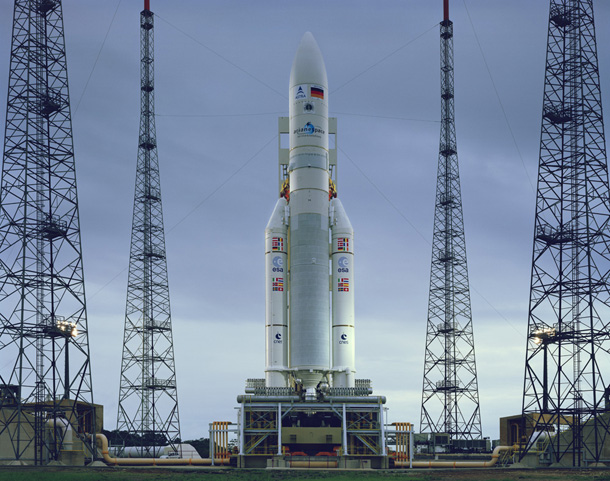
What do you do now?
I have done a lot of conflict things but I don’t really want to do any more. I have said what I needed to say. I have been trying to photograph the technology of warfare, how is warfare being fought. It’s not being fought by shooting guns anymore. The way that modern warfare being fought is by computer systems, satellites, submarines, special forces, using invisible systems. Last year the most important act of warfare in the world, the one that history will remember, is one that you probably don’t even know about – Americans placed a virus inside the Iranian computer software at a nuclear power plant where they were purifying uranium. When the machines spun at high speed, the virus told to spin ten times faster and the factory just exploded. Since then there’s been several stories on full scale cyber warfare, infecting machines to destroy themselves, destroy factories. There is a virus that has been placed in computers all over the Arab world; control of these machines is in hands of Americans and Israelis. So I find more important to photograph that. The problem is that what the f**k do you photograph? And they know that, that’s the best part because photographers can photograph what is photographable. If it’s not photographable, it disappears below the conversation. If you don’t know it’s happening how can you protest or get angry about it? Isn’t that the perfect warfare for military? A war that is entirely private. Look at the war in Somalia, it doesn’t appear in newspapers.
Do you know Trevor Paglen? He is a geographer who is taking pictures of secret factories from 50 km distance using telescope. And he has taken photos of the satellites being launched; sometimes you just see the line of light in the sky. Photos are horrible but that’s the point. The invisible warfare, that’s where the real money is being spent. They want to read your emails, turn on a camera on your computer, take a photo with your mobile phone. That’s the warfare of the future. How do you photograph that all? It is a real challenge for me.
